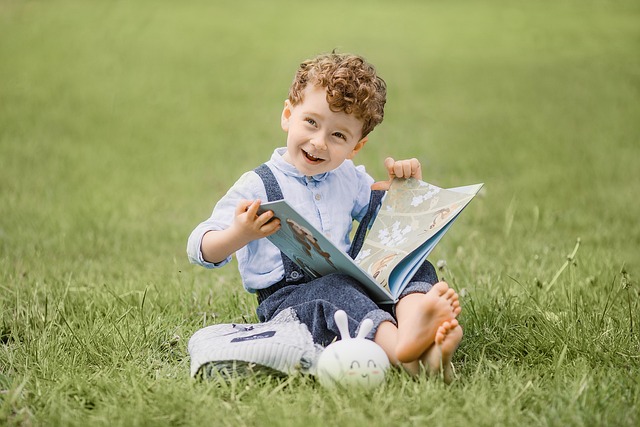Adolescent anxiety therapy addresses pressures from academics, social expectations, and identity formation, offering art and music therapy as innovative solutions. These creative methods allow teens to express emotions, improve self-awareness, develop coping strategies, and enhance overall well-being. Structured environments encourage safe self-expression, fostering emotional regulation skills and long-term resilience for effective adolescent anxiety therapy.
Adolescent anxiety is a growing concern, with many teens struggling to cope in today’s fast-paced world. Understanding the root causes and impact of this condition is crucial for implementing effective support strategies. This article explores art and music therapy as powerful tools for helping anxious teenagers express themselves and enhance their mental well-being. We delve into specific techniques, benefits, and practical ways to integrate these therapies, offering a supportive path forward for both teens and professionals.
Understanding Adolescent Anxiety and Its Impact
Adolescent anxiety is a prevalent concern in today’s fast-paced world, affecting numerous teens across various demographics. This period of life is often characterized by a myriad of changes, from academic pressures and social expectations to hormonal fluctuations and identity formation. As such, it’s not uncommon for teenagers to experience feelings of unease, worry, or fear that can significantly impact their daily lives.
The effects of untreated adolescent anxiety can be profound, leading to social withdrawal, difficulties in school, and even long-term mental health issues. Recognizing the signs and symptoms is crucial, as early intervention through therapy can make a significant difference. Art and music therapy, in particular, offer unique and engaging approaches to help teens navigate and manage their anxious thoughts and emotions, fostering a sense of self-awareness, coping strategies, and overall well-being.
Art and Music Therapy Techniques for Teens
Art and music therapy offer a unique and creative approach to addressing adolescent anxiety therapy. Through non-verbal expression, teenagers can explore and communicate their emotions in a safe and controlled environment. Art therapy encourages teens to use painting, drawing, or sculpting as therapeutic tools, allowing them to visually express their inner feelings and experiences. This process can help identify and manage anxious thoughts and behaviors by providing an alternative way of communication when words may feel insufficient.
Music therapy is another powerful method that harnesses the emotional impact of music. It involves listening to specific songs, creating music, or engaging in music-making activities to enhance mental health. For anxious teenagers, rhythm and melody can provide a sense of calm and focus, helping to regulate their mood and reduce anxiety symptoms. Music therapy sessions may include singing, playing instruments, or even just closing their eyes and focusing on the sounds around them, fostering mindfulness and emotional awareness.
Benefits: Enhancing Mental Well-being and Self-expression
Art and music therapy offer a unique and effective approach to enhancing mental well-being in anxious teenagers. Through creative expression, adolescents can explore and process their emotions in a safe and supportive environment. This form of therapy encourages self-reflection and provides an alternative means of communication for those who may struggle to articulate their feelings verbally. By engaging in artistic activities, teens can gain a deeper understanding of their anxiety, leading to improved emotional regulation skills.
The benefits extend beyond the moment; art and music therapy can foster long-term resilience and self-expression. Creating and interpreting art or music allows teenagers to tap into their inner thoughts and experiences, enabling them to develop healthy coping mechanisms. This process can boost self-esteem, promote a sense of control over anxiety, and provide a creative outlet for emotional release. As a result, adolescents may discover new ways to manage stress and improve their overall mental health, making art and music therapy valuable tools in addressing adolescent anxiety.
Practical Implementation and Support Strategies
Implementing art and music therapy in schools or clinical settings for anxious teenagers involves creating safe, structured environments where self-expression is encouraged without judgment. Therapists can start with simple exercises like drawing or painting emotions, using colours to represent moods, or engaging in group musical activities that foster collaboration and empathy. These sessions should be consistent, perhaps integrated into regular school schedules, to build comfort and anticipation.
Support strategies include providing clear explanations of the therapeutic process, offering diverse art materials catering to different preferences, and ensuring privacy during creative processes. Therapists should also model active listening and validate emotions expressed through art or music, fostering a sense of understanding and acceptance that can be powerful in adolescent anxiety therapy.
Art and music therapy offer powerful tools to address adolescent anxiety, providing teens with creative outlets to express themselves and enhance their mental well-being. By integrating these therapeutic approaches into support strategies, we can create a nurturing environment that fosters self-discovery and emotional resilience in young individuals grappling with anxiety. This holistic approach to adolescent anxiety therapy not only provides immediate relief but also equips teens with lifelong skills to navigate their emotions and build a more positive and fulfilling life.
